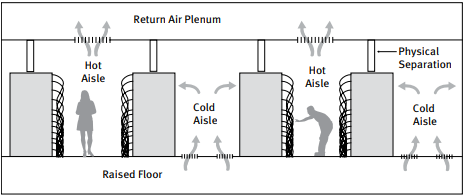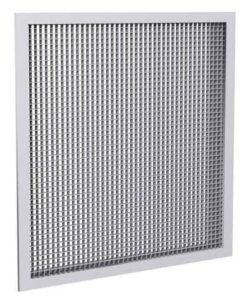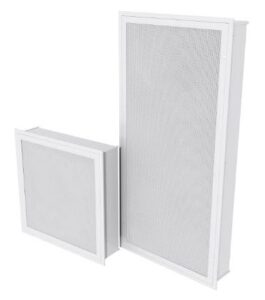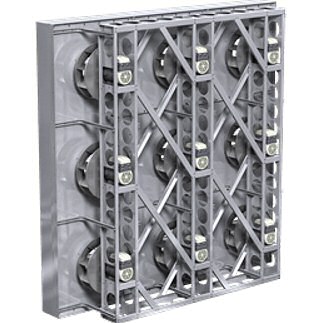According to a recent study by BlueWeave Consulting, the 2021 data center market in the United States alone is worth over $206 billion and it is predicted to grow over 10% annually. Starting off as rooms to house large mainframe computers in the 1940’s and 1950’s, data centers have evolved into complex facilities housing IT (Information Technology) infrastructure to run everything from a cloud service for a local business to storage centers of vast amounts of data for large enterprise corporations and governments. The rise of data-generating devices like smartphones has fueled this growth as corporations and governments seek to capture and analyze this data to better understand trends and position themselves to capitalize on them.
Storing and retrieving all that data comes at a cost in the form of energy consumption. Data centers use 100 to 200 times the amount of energy as a standard office space with cooling loads typically accounting for over half of the energy used by the entire facility. With such extreme levels of power consumption, it is of critical importance to design every aspect of the data center as efficiently as possible, especially the cooling system.
Air management plays a key role when designing an energy-efficient cooling system. Best practices call for a strict hot/cold aisle configuration. This approach isolates the inlet and outlet sides of the servers so that the hot discharge air can be immediately exhausted and not allowed to mix with the cool supply air. This leads to higher efficiency, smaller cooling equipment, and extended air-side economizer usage.
Air Distribution Methods
Underfloor Air Distribution
One way to supply air to the space is through an underfloor distribution system which supplies cool air in the cold aisle through a diffuser mounted in a raised floor. This underfloor air distribution system utilizes displacement diffusers such as the Price Industries’ model MFD (Modular Floor Diffuser) or the model LFG (Linear Floor Grill) as shown below.
The cool air is drawn across the heat source and is exhausted into the hot aisle where it is then exhausted through return grills, like the Price model 80 Egg Crate return grille, which is mounted in the ceiling.
Overhead Air Distribution
When underfloor air distribution systems are not feasible, overhead systems can be used. Unlike traditional overhead systems that utilize high velocity mixing diffusers, supply outlets should “dump” air directly down in front of the server racks. This prevents any chance of mixing and delivers the cool air exactly where it is needed. A Price model LFD (Laminar Flow Diffuser) is ideal for this application.
Air Handling
Exhausted air from the hot aisle is either returned to the air handler during peak cooling conditions or is exhausted to the atmosphere when utilizing air-side economizers. There are various system components that ensure adequate and balanced airflow.
Control Dampers
Dampers are used in data centers for balancing purposes or to regulate the flow of air into or out of the building. Greenheck model VCD (Volumetric Control Damper) is a commonly used model when controlling airflow. These dampers are customizable in size and have several options for frame types, material, blade type, blade operation and control. Dampers are open/closed through either a manual hand quadrant, electric actuator, or pneumatic actuator.
Louvers
Air intake and exhaust openings in data centers must be protected, to ensure that only air is entering or exiting the building. Greenheck has over 100 standard louver models to choose from, all customizable in size and color, providing different features specific to an application. Model ESD is a fixed blade louver design manufactured out of aluminum. It has a drainable head and blades which collect and channel water toward the side jambs where it flows down to the sill and outside of the building.
Supply & Exhaust Fans
Inline fans are commonly used to help move air to and from the main air handler. The Greenheck model AX axial inline fan is a reliable and effective fan for this purpose. With a direct drive motor and aluminum airfoil propeller blades, the AX efficiently delivers a capacity of up to 125,000 cfm and 5 in. w.g. The direct drive motor configuration reduces maintenance as there are no drives or belts that need adjustment or replacement.
DOAS (Dedicated Outdoor Air Systems)
Proper conditioning of outside air is critical in data center applications. Both temperature and humidity control are critical factors to consider when selecting cooling equipment. DOAS units supply cool, dehumidified outside air in the summer and heated outside air in the winter. They can be configured to operate as a rooftop unit that partially recirculates return air, or as a true DOAS unit that can deliver up to 100% outside air.
To increase operating efficiencies, DOAS units operate in economizer mode to utilize “free cooling” for the data center. An outside air temperature/enthalpy sensor will monitor the outdoor conditions and enable the economizer sequence when conditions are ideal. It is only when both the temperature and humidity fall within acceptable ranges that economizer will be used. Data centers typically run at higher cooling discharge temperatures, extending economizer operation and savings.
Energy Recovery
Another method of energy savings is the utilization of an air-to-air energy recovery enthalpy wheel or core. These total enthalpy devices precondition outside air by exchanging heat and moisture from the already conditioned exhaust air, thereby reducing the mechanical cooling and heating loads of the building. This device helps reduce the amount of energy consumed and can help reduce the equipment size required for the building. Energy recovery can be utilized in a preconditioner without heating or cooling, such as Greenheck’s model ECV (Energy Core Ventilator), ERV (Energy Recovery Ventilator) or ERVe, that feed a rooftop unit or air handler. They can also be utilized in a DOAS unit like Greenheck models RVE (Rooftop Ventilator w/ Energy Recovery Wheel) or RVC (Rooftop Ventilator w/ Energy Recovery Core).
Centralized Air Handlers
Centralized air handlers offer advantages over multiple unit systems in that they can utilize surplus capacity to improve overall efficiency under part load conditions. When utilizing a fan array (as shown below) air volume is easily adjusted using energy-efficient EC (electronically commutated) motors, offering up to 16% efficiency gains at partial load and speed.
Greenheck offers multiple plenum fan models such as model OPA (Open Plenum Array), which is a customizable pre-assembled fan array with aluminum backward-curved airfoil wheels, and EC motors that increase efficiency. This model reduces labor costs due to being pre-assembled and is self-supporting, so it does not require additional bracing. Greenheck model HPA (Housed Plenum Array) is a modular design with a sound attenuating housing, which allows for customizable arrangements that can be used as a single fan or assembled in the field as a built of array. Due to its modularity, this fan offers the flexibility to be installed in an existing being or be moved easily.
Fan arrays, can be coupled with Greenheck water coils, providing heating and/or cooling to the space. Coils are customizable to not only meet size requirements but also performance requirements.
Choosing the Right Air Distribution Partner
Data centers are complex systems that require a tremendous amount of energy to operate. When selecting equipment to cool the critical IT infrastructure, it is important to look beyond the product to choose a manufacturer that is best positioned to provide a successful outcome. Power costs are a major component of data center operations so working with manufacturers that focus on product innovation and sustainability can help owners achieve their own green and sustainability goals.
Both Price Industries and Greenheck are leaders in the air distribution market. Their commitment to their own company’s sustainability goals, and those of the broader industry through partnerships with organizations like ASHRAE (American Society of Heating, Refrigerating, and Air-Conditioning Engineers), AHRI (Air Conditioning, Heating & Refrigeration Institute) and AMCA (Air Movement and Control Association), set them apart from their peers.
Change is constant in the fast-moving world of technology. Data centers must adapt and evolve to keep up with increasing demand and meet the goals of efficiency and sustainability. It is important to choose an air distribution partner as well as a manufacturer’s representative like Brucker, that is as committed to those goals as you are.
References:
- (BlueWeave Consulting, April 2022). Data Center Market – Global Size, Share, Trend Analysis, Opportunity and Forecast Report, 2018–2028, Segmented By Component (Solution, Service); Type (Colocation, Hyperscale, Edge, Others); Organization Type (Large Enterprises, SMEs); End User (BFSI, IT & Telecom, Government, Energy & Utilities, Others); Region (North America, Europe, Asia Pacific, Latin America, Middle East & Africa).
- (Pacific Gas & Electric Company, October 2012). Data Center Best Practices Guide: Energy efficiency solutions for high-performance data centers.
- (Greenheck Corporation, Creisher, Jon, July 2022). Choosing the Right Air Distribution Partner for Data Centers https://www.greenheck.com/resources/blog/blog-post/fresh-air-from-greenheck/2022_07_11/choosing-the-right-air-distribution-partner-for-data-centers







Recent Comments